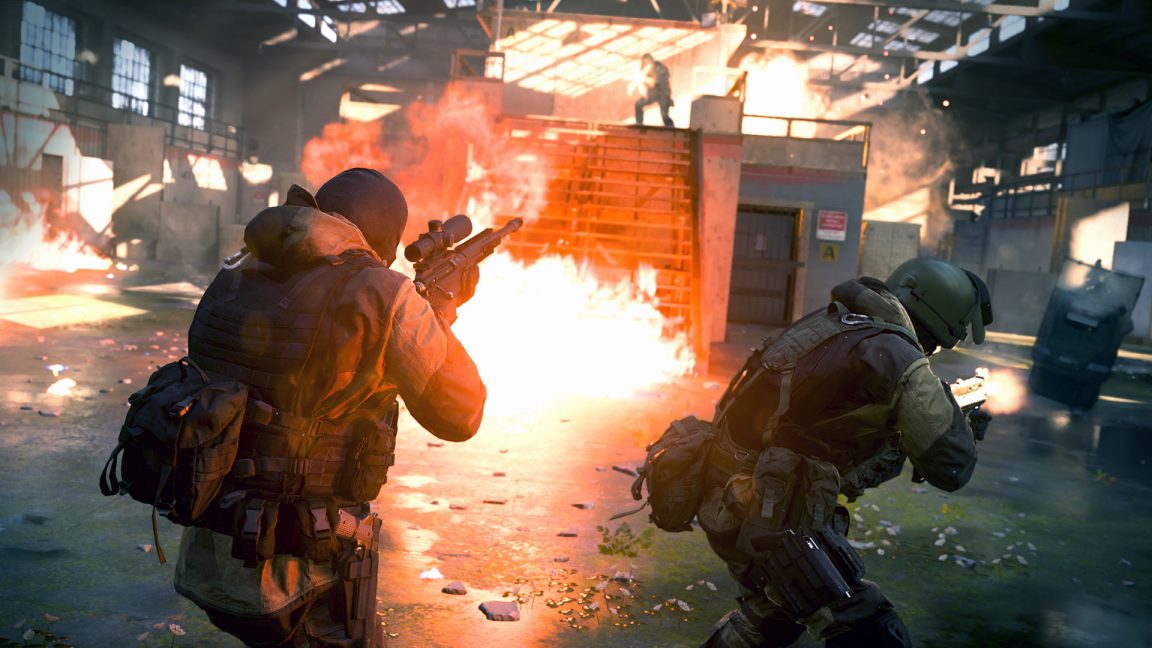Why white phosphorus is causing controversy for Call of Duty
The smartwatch your character wears in the new Call of Duty: Modern Warfare can probably tell you which way is north, but it has no moral compass.
Get a string of kills and the little Tamagotchi-like character on its screen will chirp with glee, feeding on the death you’ve wrought. And if you do really well, you’ll be rewarded with a killstreak weapon: white phosphorus.
It’s not new for Call of Duty to pull its military spectacle from the headlines, but the celebratory context of this inclusion has rubbed many up the wrong way. White phosphorus is a deeply controversial material - sometimes weapon, sometimes not, it’s been making headlines for 150 years.
Boiled p**s. Nothing good starts that way, and it’s what Hamburg alchemist Henig Brandt began with 300 years ago, burning the residue until it became highly toxic. It wasn’t long before white phosphorus became a popular poison for killers of the period. Unfortunately for them, it glowed in the dark, and detectives learned to look out for it in their forensic investigations.
By 1867 white phosphorus had been bottled for use in grenades by Irish republicans; these “infernal machines” scared the British Home Office enough to send agents to Italy and Paris to look into their manufacture. And after the onset of the First World War, its use in arson saw twelve anti-conscription union workers imprisoned in Sydney. Meanwhile, on the other side of the world, the British Army was preparing phosphorus-based weapons for war.
American, Commonwealth and Japanese soldiers all used white phosphorus grenades during the conflict, and it’s here our contemporary controversy was first established. While the material could be used to create smoke clouds and camouflage movement, armies also discovered that it could be used to hurt people - in quite horrific ways.
In an initial explosion, the element can stick to the skin, where it burns for some time until fully consumed. Worse, the phosphorus can be absorbed through wounds and cause potentially lethal damage to internal organs. And the smoke that makes white phosphorus such an effective screen? It also irritates the eyes, nose and throat, and causes severe burns at high concentrations.
In other words, white phosphorus has an accepted military use, and a far more controversial one. The difference isn’t defined by the weapon’s type but its context - just as a big knife might belong in your kitchen but cause alarm in the street.
As such, it’s not a substance banned by international law. Instead its use is restricted. The Geneva Conventions forbid firing incendiary weapons in civilian areas, but no such law governs the use of white phosphorus against military targets. US field manuals and teaching texts on the subject are contradictory and confusing.
If the use of white phosphorus sounds morally complex on paper, it’s only become more so in reality. Early in the Iraq War, local doctors described melted skin on the bodies of insurgents. In late 2005, a US general claimed white phosphorus was a tool for “marking and for screening”, while in the same month, a military spokesman confirmed it had been used directly against enemies to drive them out of cover.
This is the kind of murky ambiguity the Modern Warfare series has long highlighted in single-player - think Death from Above, the AC-130 gunship mission that tackles the discomforting distance of contemporary battle. If white phosphorus were used in this year’s Call of Duty campaign, it would likely form part of a distressing sequence that left us questioning our mission - just as it did in the most horrifying scene of Spec Ops: The Line. But multiplayer has long been an odd fantasy realm considered exempt from moral obligation.
“Our game is more about two sides,” Infinity Ward multiplayer design director Geoff Smith told VG247. “There is no good guy or bad guy, you play on either one. We’re just creating this playground to play on.”
This philosophy is a familiar one. Shooters have often fetishised the weaponry of the military they’re mimicking, creating sandboxes where their audiovisual impact can be enjoyed away from their real-world use. White phosphorus isn’t even new to the competitive FPS scene - it turns up in the No. 76 incendiary grenades of Battlefield 5, where you’ll see the flames stick to players. Even cute and colourful Worms has its cluster bomb - featured next to the Super Sheep and Banana Bomb - banned by international law and controversial enough to fill its own article.
Perhaps, though, as single-player campaigns get more sophisticated in their storytelling, and developers commit to showing the cruelty and collateral of your actions, the gleeful celebration of death in their multiplayer counterparts will only become more jarring.









.jpg?width=291&height=164&fit=crop&quality=80&format=jpg&auto=webp)

